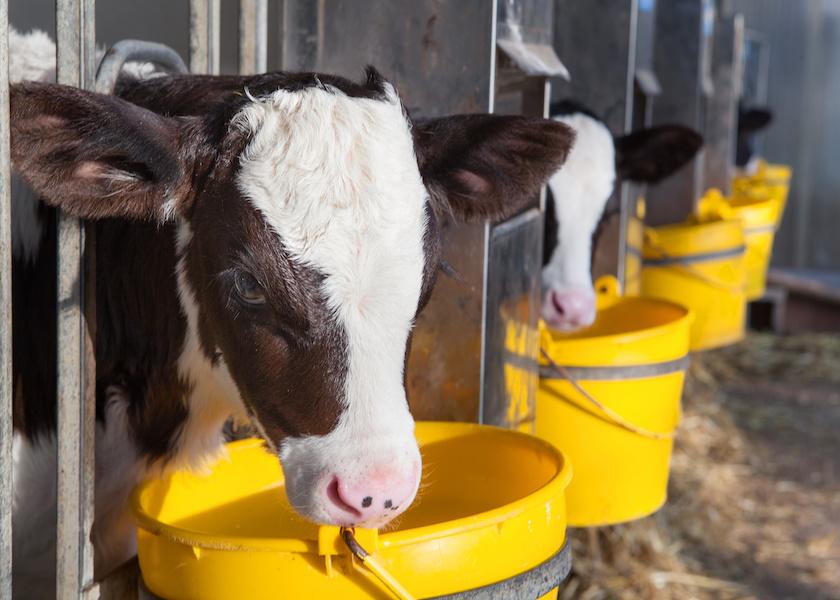Watch Liquid Feed Temps when Mercury Drops

Raising calves in the winter presents a host of extra challenges, which include ensuring that every calf receives a properly warmed liquid feeding, every time they eat.
The ideal feeding temperature for liquid rations is 100 to 105°F, according to Ann Hoskins, Calf Products Coordinator for Vita Plus. Hoskins stressed the importance of this warmth to help calves maintain body temperature and conserve energy in cold temperatures. “If calves are fed rations lower than their own body temperature, they must expend energy to regulate it, which comes at the expense of gain and immune function,” she noted.
Feeding liquids below body temperature also is one factor that increases calves’ susceptibility to abomassal bloat. The frustrating condition is so common that some experienced calf raisers refer to winter as "bloat season."
A series of touchpoints in liquid feed preparation require attention to ensure the regular routines of preparing liquid rations are adjusted to compensate for frigid conditions. Cold storage is excellent for preserving powdered milk-replacer stability. But according to the experts at Grober Nutrition, milk replacer that is subject to rapid temperature changes (cold to warm and vice-versa) will cause condensation that can interfere with proper mixing and formulation of the final solution.
Hoskins advised planning ahead by moving milk replacer from cold storage to room temperature one or two days prior to use. “If adding cold powder to water, you will need to adjust water temperature for mixing,” she noted.
Cold pails and other feeding utensils also can drop the temperature of the final solution. And as prepared liquid feed is transported outdoors to the calves, freezing conditions can drop its temperature quickly. Hoskins suggested periodic checks of the temperature of milk being delivered to the first, middle, and last calf in a feeding group to ensure consistent temperatures.
She offered the following tips to prevent temperature loss after liquid feedings are prepared:
- Use an insulated tank to store prepared milk for transport.
- Wrap the tank or bottles in an insulated sleeping bag. (It’s best to have a couple on hand to allow for laundering).
- Use spray foam to coat the tank to help hold the heat.
- Prepare multiple batches of milk and feed in smaller groups to limit outdoor exposure time.
- Use lids on pails to retain heat.
- If you are transporting milk via bottles or pails, build an insulated, mobile shelter to transport them.
- A warm water bath also is an option, but it can create wet and uncomfortable conditions for calf feeders.
Finally, Hoskins advised feeding youngest calves to oldest, to ensure the youngest animals receive the warmest milk.







